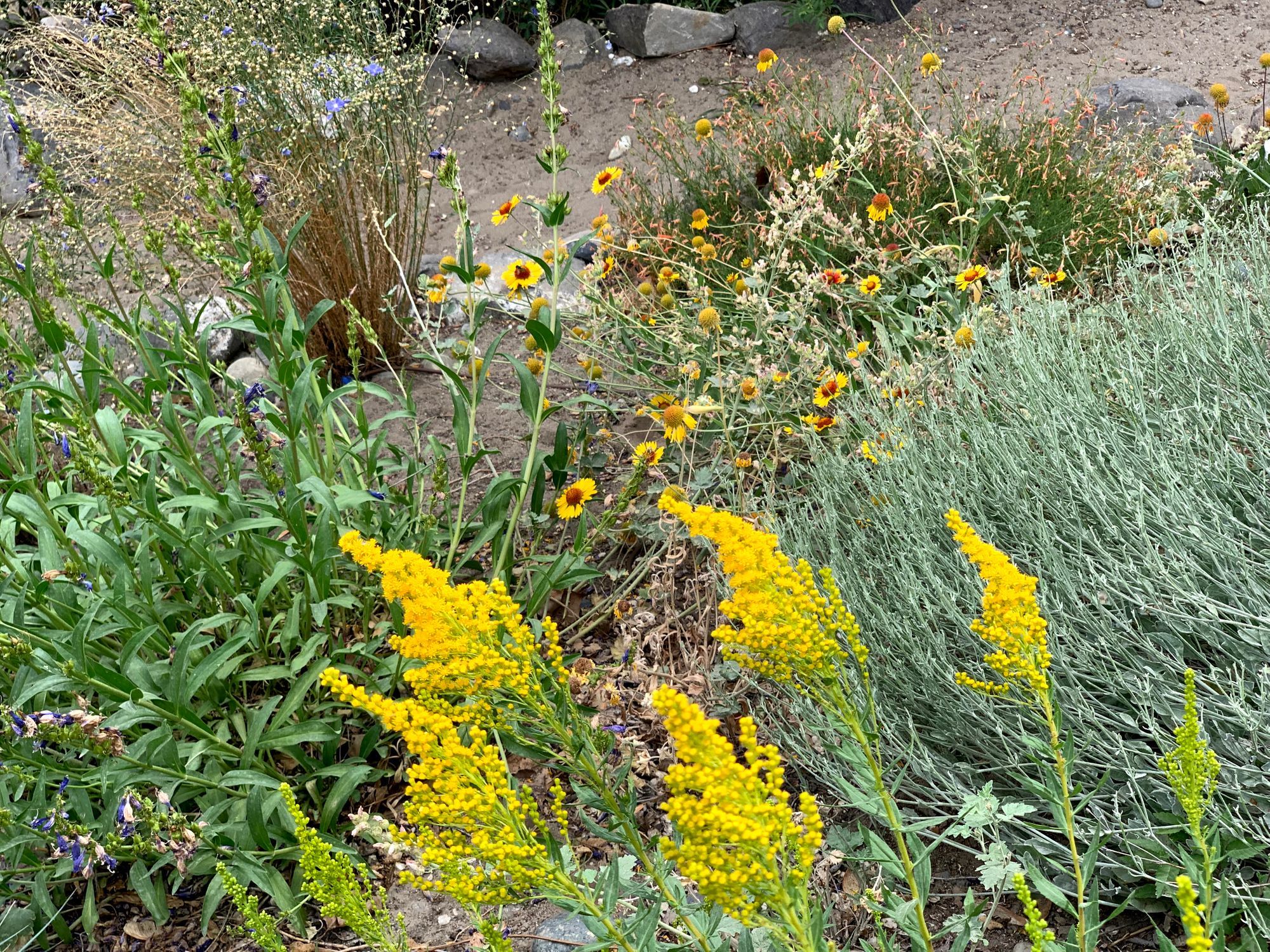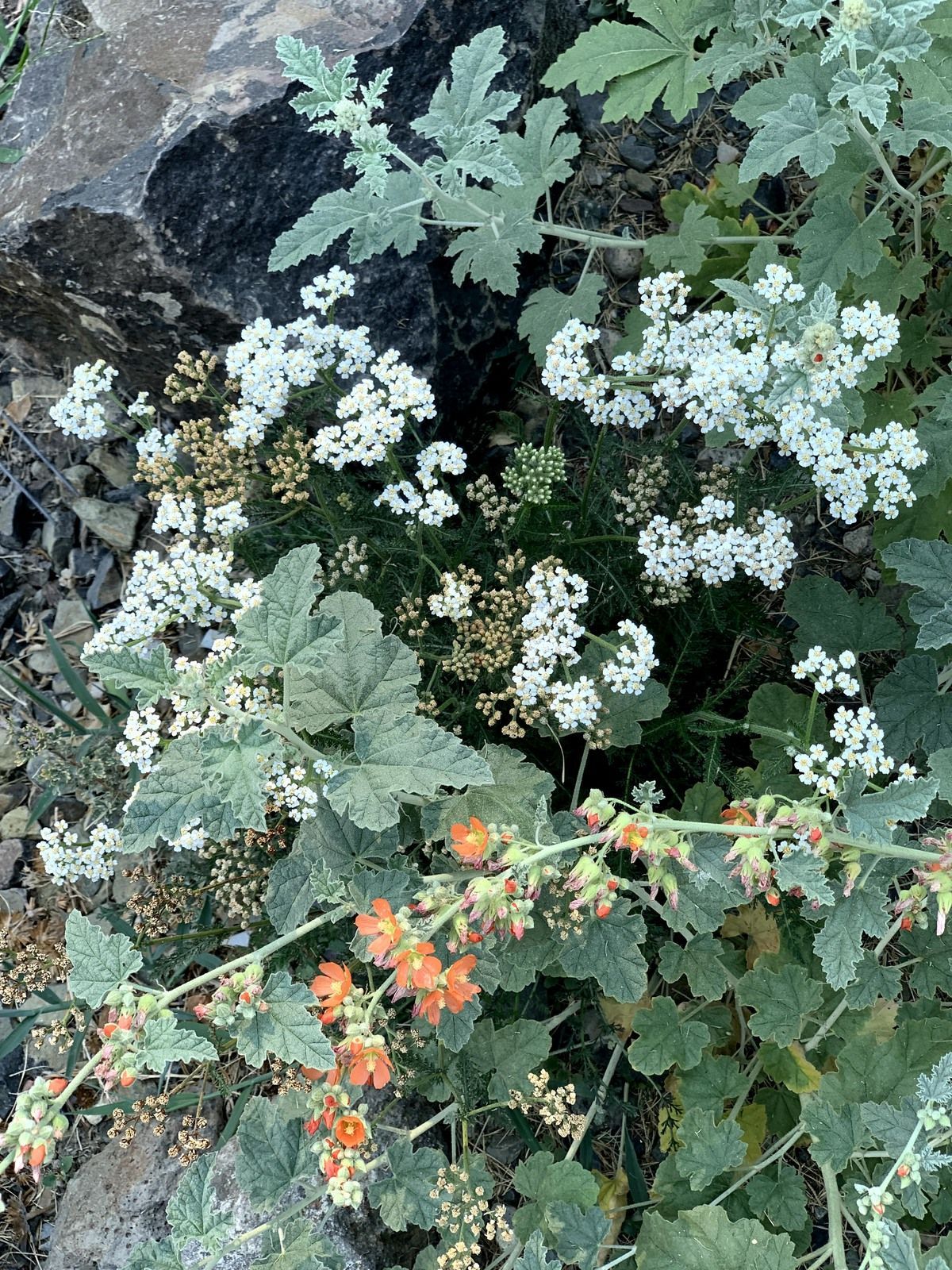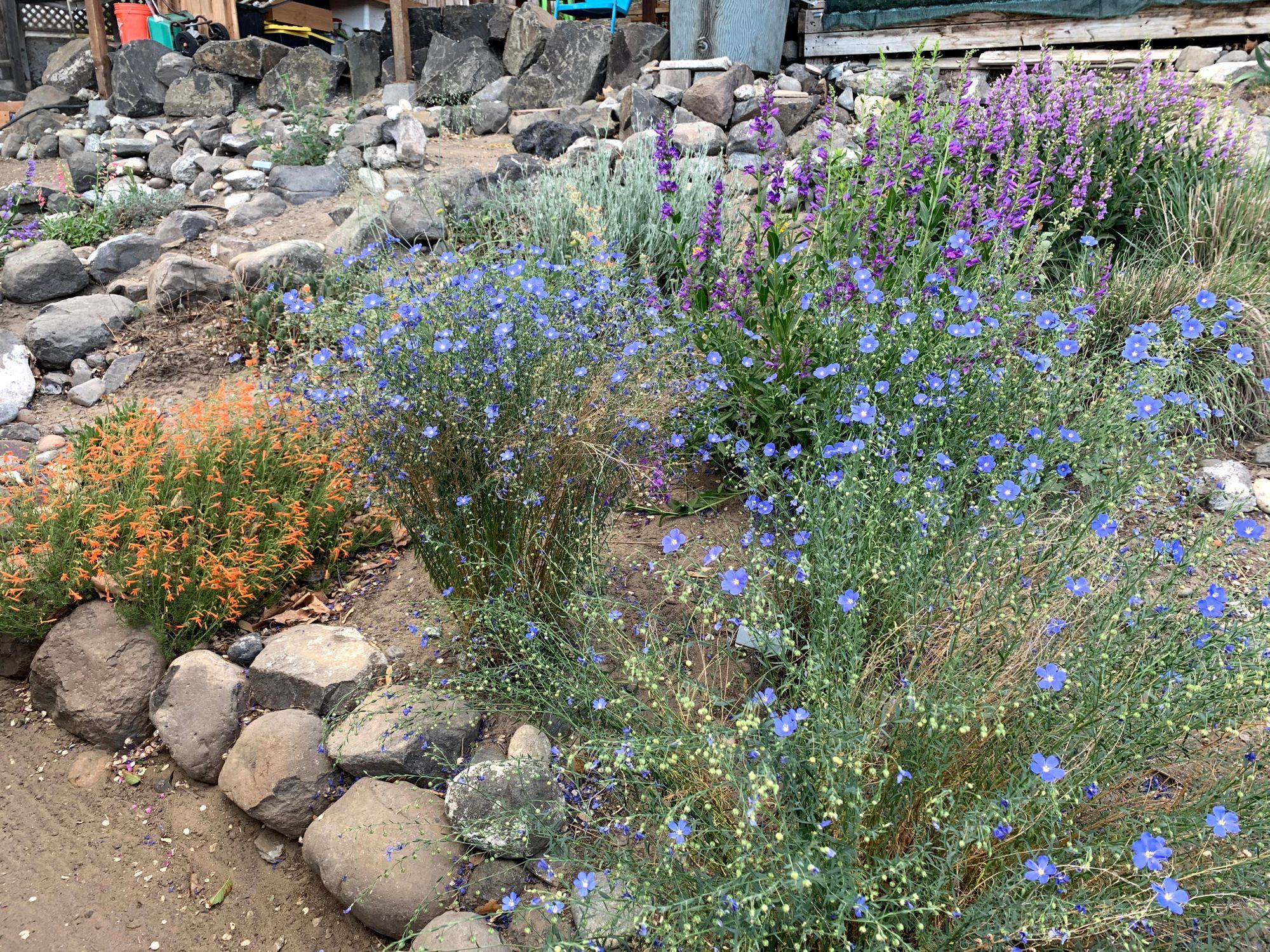You should kill your lawn. Seriously, murder it. Turn off the sprinklers. Let it die a slow death of dehydration in our ever record-breaking heat. Or even better, smother it with cardboard and mulch and treat the earthworms to a feast. While plotting its demise, reach out to The Heritage Garden Program (hgcd.info) to aid and abet the crime. They’ll throw in a free native garden design. In fall, dig into its decaying remains and plant a diverse array of native, drought tolerant plants. Spend future seasons sipping champagne, chuckling at the wealth you’ve amassed from switching to drip irrigation. Toast the pollinators and birds as they flock to the resilient oasis you’ve created over its cold, composted corpse.
Too dramatic? More dramatic and terrifying is the overwhelming decline in biodiversity we face. The lawn has already declared war. We need to retaliate before it’s too late.
Currently, over 40 million acres of the U.S. has been converted to the high-input, monoculture crop that is the lawn.(1) That biological dead zone grows by the hour. As lawns have taken over, wildlife habitat has shrunk, and pollinator populations have plummeted. The correlation is not coincidence. Pollinator loss is a direct result of habitat fragmentation and pesticide use, two things the lawn depends on. Pesticides are indiscriminate killers, meaning it’s like dropping a mini nuclear bomb. All life forms in its vicinity are negatively affected, not just the intended targets. These detrimental effects are seen in humans, as well. The link between pesticide use and cancers is well documented.(2) Humanity’s wellbeing is at stake. The lawn is complicit in our declining health.

Also, the lawn is a thirst trap. Aside from being a huge time suck in the form of maintenance and mowing, 9 billion gallons of water are dumped annually on American lawns(3), and they keep demanding more. We’re in a drought. Not just any drought — an extreme drought (4) with no end in sight. With that, the flow and quality of our waterways is becoming increasingly unpredictable. Add in the compounding demand from our skyrocketing population, and it’s unwise to assume our watershed will keep up. Scarcity, price increases, and water rationing loom on the smoky horizon. The amount of irrigation, and the whopping utility bills that go with it, could be astronomically less if landscapes were designed with plants adapted to regional precipitation and climate. Drought tolerant plants, like those in our own shrub-steppe biome, offer a unique, logical, local solution to the water sucking lawn and non-native ornamentals.
Unlike ornamental plants found on nursery shelves, native plants co-evolved alongside the flora and fauna surrounding them. In the process, they’ve created intricate relationships with these species based on reciprocity. Non-native plants have no such ties but rather, are selectively bred to be replicated on a massive scale. Superficial traits like color are valued over biological impact (like being a viable food source for pollinators). By contrast, native plants are genetically varied, meaning that each generation adapts to be stronger and more resilient than the last. Their inbred horticultural cousins severely lack this adaptability, leaving them weaker to variables like droughts, diseases, and pests. Those on the other end of the spectrum escape and become ecological terrorists. Pampas Grass, Bindweed, Bermuda Grass, and Tree of Heaven (to name a few) grew out of the nursery into superweeds, impervious to most methods of control. Like the lawn, these noxious weeds' goal is to colonize and monopolize the ecosystems they invade. The detrimental effects are felt up the food chain. With our climate becoming ever more volatile and constant attacks by these escaped monocultures, supporting the genetic diversity of native plant communities is vital to building strength and resilience to impending extremes.

There are cities that have vanquished the lawn. The drought ridden Southwest has mastered the art of xeric (aka waterwise) gardening and rainwater harvesting. Tucson, Santa Fe, Albuquerque, Phoenix, Las Vegas, and even Spokane have turf replacement and greywater programs with financial incentives for residents. Not only are these landscapes waterwise, but also stunning representations of the wondrous ecological variety in the US. By escaping the matrix of homogeneous lawns and exposing ourselves to the ecosystem in which we all play a part, the world is expounded for what it truly is: A vibrant web of multifaceted individuals working symbiotically to create and sustain life. It’s time we reconnect to that web. Our yards can become our strongest allies in the battle for water savings, biodiversity, climate resilience, and survival.
Do it. Go to war with the lawn. Get your landlord onboard. Start small with a native pollinator patch then expand from there. Get involved with local organizations that support native habitat and conservation efforts. Speak up for change in our cities and communities to incentivize waterwise practices and native vegetation. Demand policies that embrace water conservation and holistic land management. Support biodiversity and with it, humanity. Kill the lawn; create life.
Some Local Resources
- The Heritage Garden Program: Free site evaluations and native garden design for Benton, Franklin, and Yakima County residents. (hgcd.info; Facebook: @HeritageGardenProgram)
- Benton and Franklin County Conservation Districts: (https://www.bentoncd.org/) Great resource for noxious weed control and technical assistance for restoration
- The Columbia Basin Washington Native Plant Society: (cbwnps.org; Facebook: @cbwnps) Follow for information on hyperlocal native plants and volunteer opportunities.
- Tapteal Native Plants: (taptealnativeplants.com; Facebook: @taptealnativeplants) A local nursery specializing in native and drought tolerant plants.
More Information and Inspiration
- Nature’s Best Hope: A New Approach to Conservation that Starts in Your Yard by Doug Tallamy — Check it out from the library or local bookshop.
- Follow https://www.pollinator.org; Facebook: @pollinatorpartnership
- Use the National Wildlife Federation’s Native Plant Finder https://www.nwf.org/NativePlantFinder/to discover which plants serve as host plants for native pollinators in your area
- Check out City of Spokane’s free turf conversion guide: https://my.spokanecity.org/publicworks/water/water-wise-spokane/spokanescape/
Hesitant? Take baby steps
- Water early in the morning or late in the evening. This reduces the amount of water lost to evaporation and sets plants up for the hot day to come.
- Water deeply less frequently. This helps plants build strong deep root systems as opposed to shallow surface roots.
- Mow no shorter than 4”. This shades the soil keeping it cooler as well as reducing evaporation.
- Mulch around your plants and leave the leaf litter- This gives pollinators a place to overwinter and complete their life cycles while also holding moisture and keeping the soil around your plants cooler.
- Avoid pesticides at all costs. They’re indiscriminate killers, humans included.
Solutions surround us; we just need a nudge.
Sources:
1. ‘About Pollinators’ Pollinator Partnership, pollinator.org/pollinators
2. ‘The Average American Lawn’ The Nature Conservancy, content.yardmap.org/explore/the-average-american-yard
3. ‘Pesticide-Induced Disease Database’ Beyond Pesticides, beyondpesticides.org/resources/pesticide-induced-diseases-database/cancer
4. ‘Outdoor Water Use in the U.S.’ United States Environmental Protection Agency, 19january2017snapshot.epa.gov/www3/watersense/pubs/outdoor.html
5. ‘Current Drought Map’ US Drought Monitor, droughtmonitor.unl.edu
6. CTUIR Tribal Native Plant Nursery: https://business.facebook.com/NativesGoneWild
Solutions surround us. We just need a nudge.
Main photo: Spring Garden by Kelsey K.

